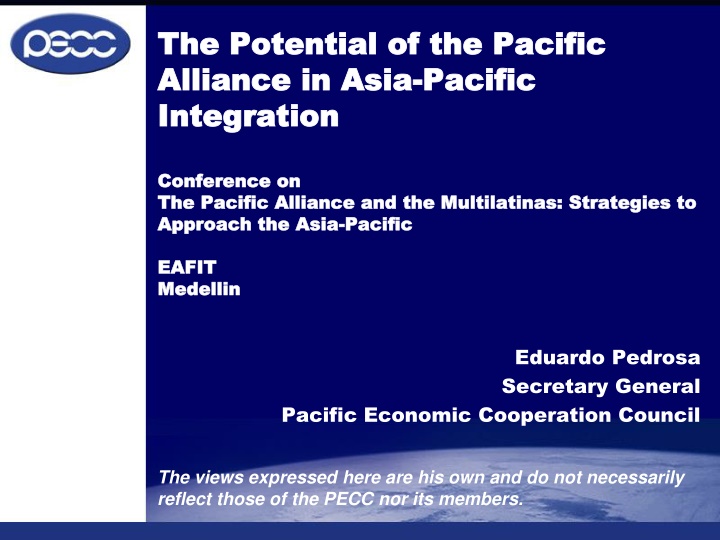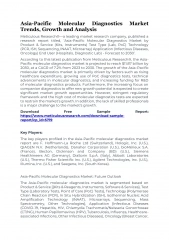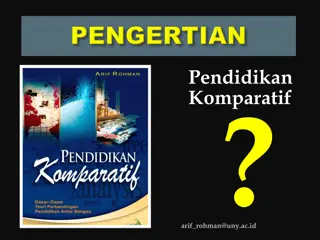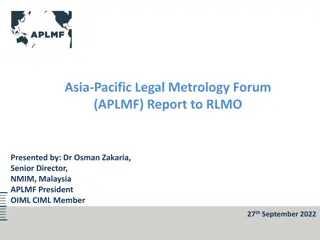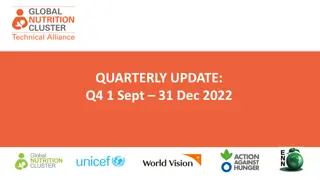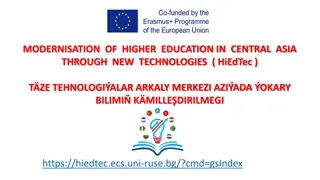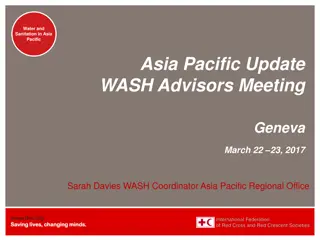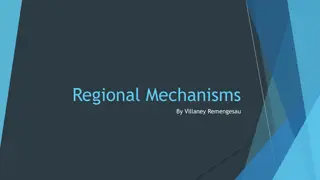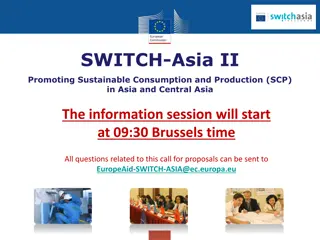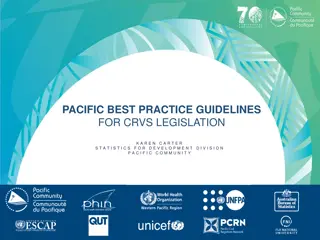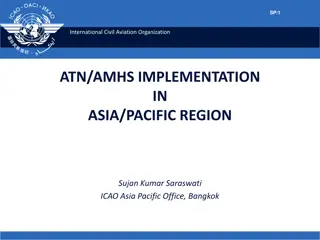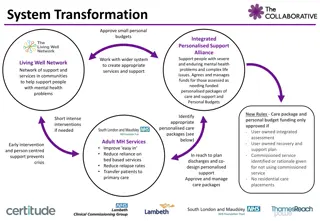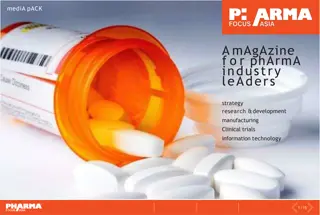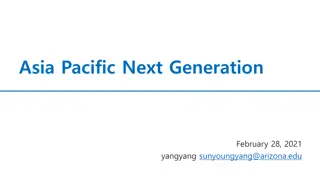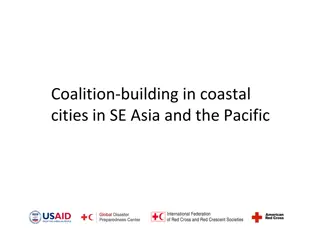The Potential of the Pacific Alliance in Asia-Pacific Integration
Uncover the historical roots and evolution of the Asia-Pacific region from the lens of the Pacific Economic Cooperation Council (PECC). Delve into the concept of the Asia-Pacific, its significance to member countries, and the implications for regional cooperation. Learn about PECC's role as a non-governmental forum for research, dialogue, and policy advocacy, shaping economic strategies in the fast-growing region.
Uploaded on Mar 13, 2025 | 5 Views
Download Presentation

Please find below an Image/Link to download the presentation.
The content on the website is provided AS IS for your information and personal use only. It may not be sold, licensed, or shared on other websites without obtaining consent from the author.If you encounter any issues during the download, it is possible that the publisher has removed the file from their server.
You are allowed to download the files provided on this website for personal or commercial use, subject to the condition that they are used lawfully. All files are the property of their respective owners.
The content on the website is provided AS IS for your information and personal use only. It may not be sold, licensed, or shared on other websites without obtaining consent from the author.
E N D
Presentation Transcript
The Potential of the Pacific The Potential of the Pacific Alliance in Asia Alliance in Asia- -Pacific Integration Integration Pacific Conference on Conference on The Pacific Alliance and the The Pacific Alliance and the Multilatinas Approach the Asia Approach the Asia- -Pacific Pacific Multilatinas: Strategies to : Strategies to EAFIT EAFIT Medellin Medellin Eduardo Pedrosa Secretary General Pacific Economic Cooperation Council The views expressed here are his own and do not necessarily reflect those of the PECC nor its members.
Presentation Outline About PECC The Concept of the Asia-Pacific The Current Economic Context The Trans-Pacific Trade Relationship Contemporary Developments in the Asia- Pacific Implications for the Pacific Alliance
What PECC Is A network of individuals from academia, business and government (in private capacity) organized into 26 member committees committed to enhanced Asia- Pacific regional cooperation for mutual economic benefit A forum for non-governmental research and dialogue on critical economic issues facing the region A vehicle for catalytic policy ideas and informed opinion to reach policymakers and leaders in Asia-Pacific economies
PECCs Member Committees Mongolia Canada Korea China Japan USA Hong Kong, China Chinese Taipei Mexico Thailand Philippines Vietnam Colombia Malaysia Brunei Darussalam Singapore Ecuador Indonesia Peru Australia Chile New Zealand
The Asia-Pacific as a region Asia-Pacific is a construct Traces its roots to ideas of Japanese economist Kiyoshi Kojima Kojima Rise of Japan in 1950s and 1960s and importance of region to Japan and reaction to integration in Europe Kojima s proposal for a Pacific Free Trade Area led to formation of the Pacific Trade and Development Conference (PAFTAD) in late 1960s At same time businesses in the region networking through the Pacific Basin Economic Council (PBEC) founded in the 1960s This led to creation of Pacific Economic Cooperation Council (PECC) in 1980 And then to APEC in 1989 All of this traces its intellectual roots to Kojima s original proposal for a Pacific Free Trade Area (PAFTA).
The Development of Asia-Pacific Regionalism? Kojima PAFTA Idea 1964 ASEAN 1967 PBEC 1967 PAFTAD 1968 ANZCERTA 1983 PECC 1980 AFTA 1993 NAFTA 1994 APEC 1989 ASEAN+1s 2005-2009 TPP Launched 2005 RCEP Launched 2011 FTAAP ???
Defining the Asia-Pacific today All PECC members All APEC members All members of the East Asia Summit
Current Economic Context Regional and Global GDP Growth
The Scale of the Region: Growth of East Asian Economies 30,000 27,489 25,000 US$13,624 20,000 US$ billions US$ billions 15,000 13,865 10,000 5,000 0 2008 2018
GDP per capita: PA and ASEAN 60,000 50,000 40,000 30,000 20,000 12,162 10,000 9,931 0 CHL COL MEX PER BRN CAM IDA LAO MYS MYA PHL SGP THL VNM
Comparison of consumption expenditure USA ASEAN PA 11.6 Miscellaneous goods and services 5.0 7.3 4.3 Restaurants and hotels 3.7 4.6 6.0 Education 4.9 5.2 6.4 Recreation and culture 2.4 3.7 1.6 Communication 1.4 2.5 6.9 Transport 6.8 8.6 14.8 Health 3.9 5.1 2.8 Furnishings, household equipment and maintenance 2.6 3.5 12.6 Housing, water, electricity, gas and other fuels 9.6 10.0 2.4 Clothing and footwear 1.7 3.3 1.3 Alcoholic beverages, tobacco, and narcotics 1.7 1.7 4.5 Food and nonalcoholic beverages 19.6 12.7 0 2 4 6 8 10 12 14 16 18 20 % of GDP % of GDP
Growth in Intra-Regional Trade 6,000 5,568 CAGR: 9.2 percent 5,000 4,000 US$ billions US$ billions 3,000 2,000 1,000 1,244 0 2011 1996 1997 1998 1999 2000 2001 2002 2003 2004 2005 2006 2007 2008 2009 2010 2012 2013
Growth in trade among emerging Asia- Pacific economies CAGR 2003 CAGR 2003- -2013 2013 25% 20.4% 20% 15% 12.3% 11.8% 10% 5.5% 5% 0% Advanced to advanced Advanced to emerging Emerging to advanced Emerging to emerging
West Pacifics Top 20 Imports and Pacific Alliance Share 46.4% 47.7% World PA Percent of Total 500,000 50% 45% 400,000 40% US$ millions US$ millions 35% 300,000 30% 25% 200,000 20% 15% 2.5% 1.9% 1.7% 1.3% 1.2% 1.1% 0.6% 0.5% 0.4% 0.4% 0.3% 0.2% 0.2% 0.1% 0.1% 0.1% 0.0% 0.0% 100,000 10% 5% 0 0% Petrol from crude Circuit boards Petrol from Computer circuits Iron ore Other NES LNG Light petroleum oils Memory boards Computer parts Coal LCD parts NES Cars 1500cc-3000cc Mobile phones Mobile phone parts Pharmaceuticals Storage units Soya beans Copper ore Cathodes from copper
Pacific Alliance Top 20 Exports and West Pacific s Share 66.5% World Western Pacific (% of total) 70000 70% 50.6% 60000 60% 50000 50% US$ millions US$ millions 40000 40% 14.6% 30000 30% 9.1% 5.4% 5.4% 5.2% 4.9% 20000 20% 4.1% 3.8% 3.1% 1.7% 1.4% 0.4% 0.1% 0.1% 0.0% 0.0% 0.0% 0.0% 10000 10% 0 0% Petrol from crude Cathodes from copper Copper ore Computer/TV Screens Unwrought Gold Cars 1500cc-3000cc Mobile phones Petrol from Trucks < 5tonnes Bituminous coal Computers Telephone parts Ignition wiring sets Light petroleum oils Road tractors for Silver Unroasted Coffee Signal Receivers Processing units Vehicles principally
Western Pacific-Pacific Alliance Trade Summary Western Pacific s biggest imports energy, cars, minerals (iron ore, copper) Pacific Alliance members percentage share of Western Pacific imports low except for copper and copper products (close to 50% of total imports) Pacific Alliance s biggest exports energy, minerals (copper, gold), cars Western Pacific s percentage share of Pacific Alliance exports low except for copper and copper products, some energy products, some cars, coffee Huge POTENTIAL for transpacific trade
Contemporary Developments in the Asia-Pacific
An APEC Retrospective 2014 25th Anniversary of APEC Watershed moments: 1993 first APEC economic leaders meeting 1994 Bogor Goals 2004-2006 the Free Trade Area of the Asia-Pacific Originally adverse to creation of a trade bloc What changed?
20+ years since UR Completion 180 Members Duration 20 years since UR completion the longest stretch of time without a new global trade agreement under the GATT/WTO system. 160 140 120 100 Regional and bilateral trade agreements are now filling this vacuum. 80 60 40 20 0 Apr-47 Apr-49 Sep-50 Jan-56 Sep-60 May-64 Sep-73 Sep-86 Nov-01 Geneva Annecy Torquay Geneva II Dillon Kennedy Tokyo Uruguay Doha
RTAs Notified to the WTO 300 RCEP (2012) 250 ASEAN-Japan ASEAN-China ASEAN-Korea (2003) 200 P4 (TPSEP) (2002) North American Free Trade Area (1994) Australia-New Zealand Closer Economic Relations Trade Agreement (1983) 150 100 ASEAN Free Trade Area (1992) 50 0 1980 2002 2003 1981 1982 1983 1984 1985 1986 1987 1988 1989 1991 1992 1993 1994 1995 1996 1997 1998 1999 2000 2001 2004 2005 2006 2007 2008 2009 2010 2011 2012 2013 2014
Developments in Regional Integration Asian Track = RCEP Asian Track = RCEP Post Asian-crisis response to weak support from APEC and major partners to improve the region s capacity to deal with shocks Trans Trans- -Pacific = TPP Pacific = TPP Accelerate progress towards APEC s goals of free and open trade and investment. Sustain US economic engagement in the region. What about the Pacific Alliance?
Asia Pacific Trade Initiatives Chinese Taipei Hong Kong, China APEC Russia TPP RCEP Japan China Korea India Canada USA AEC Brunei Malaysia Singapore Vietnam PA Mexico Laos Indonesia Philippines Thailand Colombia Chile Peru Cambodia Myanmar Australia New Zealand Papua New Guinea
The ASEAN Economic Community ASEAN ECONOMIC COMMUNITY SINGLE MARKET AND PRODCTION BASE COMPETITIVE ECONOMIC REGION EQUITABLE ECONOMIC DEVELOPMENT SME development Initiative for ASEAN Integration INTEGRATION INTO GLOBAL ECONOMY Coherent approach toward external economic relations Enhanced participation in global supply networks Free flow of goods Free flow of services: Free flow of investment Freer flow of capital Free flow of skilled labor Priority integration sectors Food, agriculture, and forestry Competition policy Consumer protection Intellectual property rights Infrastructure development Taxation E-commerce
Asian Trade Initiatives ASEAN Free Trade Area (1992) China-ASEAN Free Trade Agreement Korea-ASEAN Free Trade Agreement Japan-ASEAN Free Trade Agreement ASEAN-ANZ Free Trade Agreement India-ASEAN Free Trade Agreement Regional Comprehensive Economic Partnership (2015)
The Trans-Pacific Partnership A landmark, 21st-century trade agreement, setting a new standard for global trade and incorporating next- generation issues Building on original P4 agreement commitment to the Asia Pacific Economic Cooperation (APEC) goals and principles 12 negotiating parties, including 3 of the PA s members 19 rounds, 9 Chief Negotiators meetings, 13 Ministerial meetings, 1 leaders meeting
PA in the Region The Pacific Alliance as a platform for economic and trade integration with a projection into the Asia-Pacific region Rapid progress on economic integration but projection into the Asia-Pacific, issues? Institutionalization MOU Who will sign? Attending APEC or other who will go?
Moving Towards an FTAAP We will take concrete steps toward realization of a Free Trade Area of the Asia-Pacific (FTAAP), which is a major instrument to further APEC's regional economic integration agenda. An FTAAP should be pursued as a comprehensive free trade agreement by developing and building on ongoing regional undertakings, such as ASEAN+3, ASEAN+6, and the Trans-Pacific Partnership, among others. APEC Leaders Statement, Yokohama 2010
Concrete Steps? we endorse the Beijing Roadmap for APEC s Contribution to the Realization of the FTAAP . Through the implementation of this Roadmap, we decide to accelerate our efforts on realizing the FTAAP on the basis of the conclusion of the ongoing pathways, and affirm our commitment to the eventual realization of the FTAAP as early as possible by building on ongoing regional undertakings We agree to launch a collective strategic study on issues related to the realization of the FTAAP APEC Leaders Statement, Beijing 2014
Income Gains from Regional Trade Initiatives
Implications for the Pacific Alliance
What do you think is the likelihood of success in concluding the following proposed agreements over the next 3 years? 40% 33.9% 33.0% 22.5% 19.1% 18.8% 18.8% 20% 8.4% 0% -20% -18.8% -22.1% -22.7% -22.9% -22.9% -32.5% -40% -60% -59.3% -80% ASEAN Economic Community Trans Pacific Partnership China-Japan- Korea Regional Comprehensive Economic Partnership Pacific Alliance Trans Atlantic Trade and Investment Partnership WTO DDA Not likely Likely
ASEAN-Pacific Alliance? September 2014: ASEAN-PA Ministerial in New York promote cooperation between the two groupings through other frameworks, including FEALAC May 2015: ASEAN Committee of Permanent May 2015: ASEAN Committee of Permanent Representatives and PA Ambassadors Representatives and PA Ambassadors, agreed to explore cooperation in areas such as: Trade and investment Agriculture Energy Logistics SMEs Financial services and Tourism
Whats next? ASEAN has MOUs/Cooperation Agreement with: United Nations, ILO, ADB, ESCAP, EU (Dialogue Partner) GCC 2009 Joint Vision 2009 MOU Between Secretariats 2010-2012: Action Plan Suggestions: Joint Expert Group? ASEAN-BAC, PA-BAC?
Percent of respondents who selected dont know for various trade initiatives 25.0% 21.8% 21.1% 20.0% 17.1% 15.0% 11.3% 11.1% 10.0% 7.9% 7.5% 5.0% 0.0% AEC TPP CJK RCEP PA TTIP DDA
Percent of respondents by sub-region who selected don t know for the Pacific Alliance Percent of respondents by sub-region who selected don t know for the Pacific Alliance 45% 40.8% 40% 35% 28.6% 30% 25% 21.8% 18.4% 20% 16.3% 15% 12.0% 10% 5% 0% All North America Northeast Asia Oceania Pacific South America Southeast Asia
Conclusions Global economic context extremely challenging slower growth, protectionist sentiments Huge opportunity for PA in growing Asia- Pacific market Opportunity to boost growth through regional economic integration
Conclusions Lessons from PA members for FTAAP Coverage? Treatment of next generation issues Modalities/structure Asia-Pacific as a construct - concept still being defined Integration at a crossroads or has it gone full circle back to Kojima? Various configurations and permutations Opportunity for PA through engagement: ASEAN FTAAP
